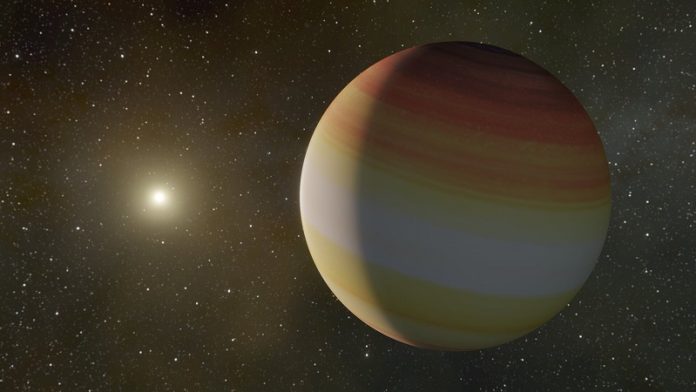
Astronomers from Nicolaus Copernicus University in Torun have made an exciting discovery—a giant planet in the constellation of the Great Bear.
This massive planet, with a weight 11 times that of Jupiter, orbits its star every 14 years. It has a very cold temperature of around minus 100 degrees Celsius.
The discovery was recently shared in the journal Astronomy & Astrophysics.
The newly discovered planet is what scientists call an “exoplanet,” meaning it orbits a star outside our solar system.
This planet is exceptionally large, being 11 times bigger than Jupiter, the largest planet in our solar system. It takes 14 years to complete one orbit around its star, which is about six times farther away from its star than Earth is from the Sun.
The star itself, although not visible to the naked eye, can be seen using a small telescope. According to the scientists, the star is similar to the Sun but 20% larger and twice as massive.
This star, along with the planet, is estimated to be around 5 billion years old—roughly the same age that our solar system will be in the distant future.
Interestingly, this discovery has connections to a historic telescope. The planet’s star is named HD 118203, after being listed in the Henry Draper star catalog. The Henry Draper telescope, built in 1891, is one of the world’s first astrographs (telescopes that capture images of the sky) and was used to help create the catalog.
The Draper telescope now resides at the NCU Observatory in Torun, where it continues to contribute to astronomical discoveries.
A 20-year mystery
Astronomers have known about this star for nearly 20 years. In 2006, they found a planet two times the size of Jupiter orbiting the star in just six days.
However, their observations suggested that there might be another planet in the system. This led them to continue studying the star using powerful telescopes in Texas and the Canary Islands.
For years, the data didn’t provide a clear answer about the existence of another planet. But in March 2023, new observations confirmed that there is indeed a second, larger planet orbiting the star.
It took 15 years of patient observation to collect enough data to confirm the planet’s existence and fully understand its behavior.
The astronomers discovered that this planetary system has a unique structure. The first planet orbits close to the star, while the newly discovered planet orbits much farther away. Despite their size and distance from each other, the two planets’ gravitational pull does not destabilize the system. This is due to the effects predicted by Einstein’s general theory of relativity.
The discovery of this massive planet is important for understanding how planets form and evolve in distant parts of the universe. While these systems with massive planets are rare, they can teach us a lot about our own solar system.
The astronomers aren’t finished yet. They continue to observe the system and hope to discover more planets in the future. Many students and young researchers are also involved in this exciting work, helping to deepen our understanding of the universe.



